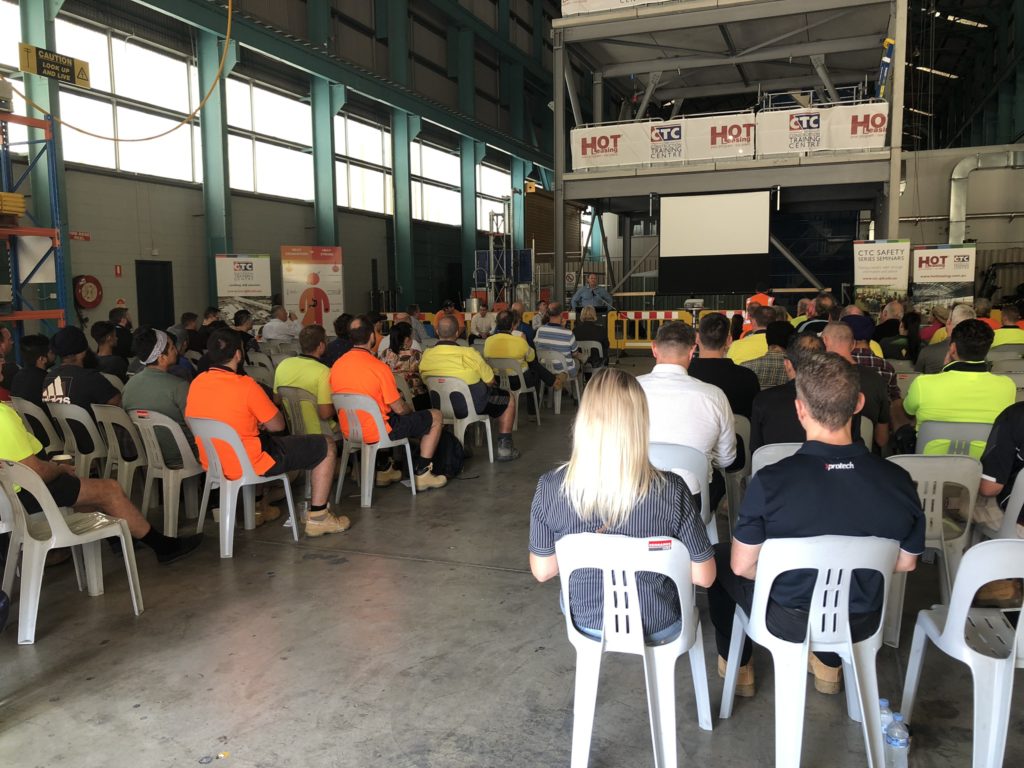Yesterday we had our final Safety Seminar for the year on a topic that is particularly pertinent within the construction industry right now: Silica Safety.
For those of you not across it, silica is a mineral found in a variety of materials used regularly in construction, such as engineered stone, concrete and tiles. Although seemingly harmless just by itself, silica becomes problematic when workers cut, crush or grind these materials which releases dust particles into the air. When inhaled, these particles are small enough to lodge deep in the lungs and cause an incurable disease called silicosis.
Although silicosis is not a new phenomenon, it is quickly becoming a national issue with more and more cases emerging. So far there’s been one death, over a thousand workers health screened and over 598 notices issued for offences related to poor standards in relation to silica. Because of the little controls surrounding the exposure of silica to workers, there has been a significant emergence of this debilitating and progressive disease; resulting in premature disability and death of previously healthy workers. In short: not good.
To make matters worse, silicosis is currently not well understood and as a result, treatment protocols are limited. This is particularly problematic given that there’s no known cure at this stage.
So what do we know about this disease? Well, we know that there are three types of silicosis:
- Acute Silicosis
Caused by extremely high levels of silica exposure (<1 year) and causes cough, weight loss and fatigue. The lungs become very inflamed and can fill with fluid, causing shortness of breath and low oxygen levels.
2. Chronic silicosis
Appears after 10-30 years of exposure. It often affects the upper lung areas causing extensive scarring, swelling in the lungs and chest lymph nodes which makes breathing more difficult. The most common form of silicosis.
3. Accelerated silicosis
Generally occurs within 10 years of high-level exposure and is more rapidly progressive; swelling the lungs and symptoms occur faster than in chronic forms of silicosis.
We also know that there are a few ways we can protect ourselves from these dust particles.
One of these, is to ensure everyone understands and follows the new code of practice introduced by the Queensland government. This applies to all fabrication or processing of engineered and natural stone benchtops, which sets the minimum and enforceable standards to ensure that ensure silica dust is managed safely and workers are protected.
Another important precaution you can take, is to ensure you’re wearing the correct PPE (personal protective equipment). Although PPE should be the last line of defense, wearing the right dust masks and air filters reduces the risk immensely. However, in order for it to be effective, it must be properly fitted and worn every time – otherwise you might as well not bother.
You can find out more about PPE equipment here: https://www.allensindustrial.com.au/
All in all, it was a very successful Seminar. A massive thank you to our fantastic guest speakers: Trevor Torrens from Asbestos Disease Support Society, Thady Blundell from Turner Freeman Lawyers; and Steve Keys from Keys Human Resources. We hope everyone who attended found it to be informative and look forward to seeing you at our next one in February.

Join Our Newsletter
